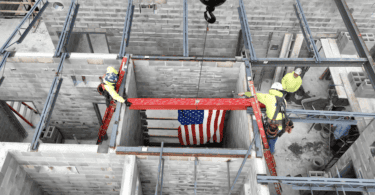by Justin Rink
At Interstate, we’ve recognized for years that technology has been revolutionizing the construction industry. As a company, we have been at the forefront of the latest innovations and have adopted some of the most advanced software and hardware to help deliver the highest quality service efficiently. But along with these innovations comes added complexity: project timelines have shrunk, logistics are more complicated, and the coordination it takes for various departments and companies to work seamlessly together throughout a project lifecycle is monumental.
As a pioneer of exploring new systems and technologies and implementing them into our day-to-day operations, Interstate was one of the first contractors in New England to mechanize the estimating process. Using a remote model, the basic estimation data was formatted and sent via teletype to a central location where the actual calculations were run, and a completed estimate was then returned to us in the same manner. The process has changed a lot since then.

Interstate uses the Trimble Robotic Total Station on many projects to scan, measure, and help determine layouts on job sites.
One of the most important tools that revolutionized the engineering side of construction in recent memory is Building Information Modeling (BIM) and the use of 3D design and visualization tools like Autodesk Revit and ManufactON. BIM models allow electrical engineers to visualize the complete electrical installation prior to beginning work. For projects that use BIM, the drawings can be invaluable tools for upfront coordination and clash detection of the various service vendors, ensuring cohesive and quick implementations.
In terms of the hardware we use to facilitate 3D modeling work, nothing has been more useful than the Trimble Total Robotic System. We use this equipment on nearly every job because it allows for comprehensive clash detection and extremely precise location mapping. It takes the guesswork out of placing components, equipment, and conduit, etc.
Beyond the tools we physically need on our job sites, Interstate constantly refreshes its processes and the software we use throughout the company. For example, Interstate recently began implementing Bluebeam software and as a result, a lot of our operations have been streamlined. From design review to marking-up contracts, to keeping documents organized and accessible from anywhere, Bluebeam has been essential in helping Interstate work as efficiently as possible and follow the lean methodology that guides the company.
UL Certified Prefabrication, 3D modeling, and the other software and tools we use – like Bluebeam – help streamline operations and reduce the amount of work that happens physically onsite. This translates to cleaner job sites, reduced timelines, and more flexibility. Today, these are all invaluable tools as construction timelines are condensed and budgets are stricter.
Justin Rink is regional manager at Interstate Electrical Services Corporation.












